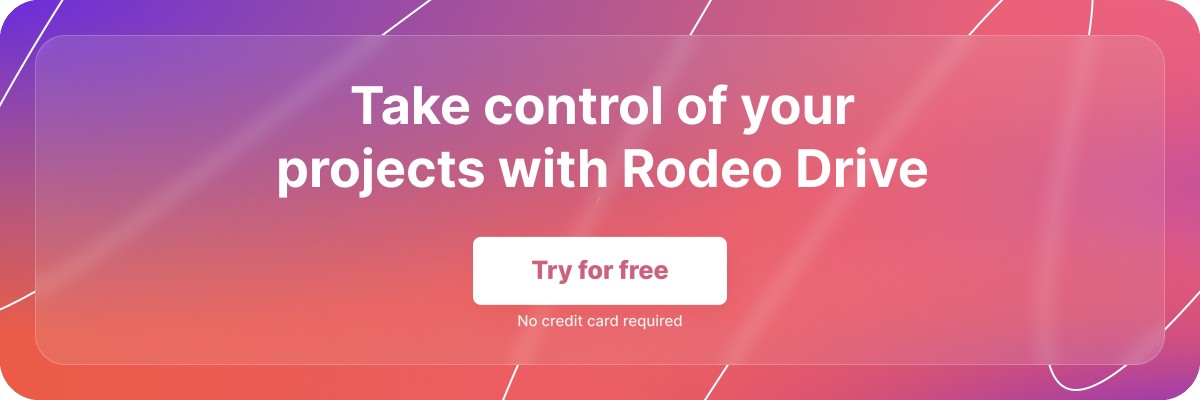The Importance of a Contingency Plan in Project Management
Your project will inevitably encounter bumps in the road. But if you know how to properly respond to them, you can prevent them from completely derailing your project. This is why it’s crucial to have a contingency plan in place to keep your workflows operating seamlessly.
In this blog, we’ll dive into what’s a contingency plan in project management, how it differs from a risk management plan, steps to create a contingency plan, as well as several tips. Let’s get started.
What is a contingency plan in project management?
In project management, you can think of your contingency plan as your plan B for a project. Contingency plans allow you to achieve business continuity when unexpected events occur, outlining the actions you'll take in the event of a worst-case scenario.
Ideally, contingency plans allow you to react faster during times of uncertainty, which helps mitigate potential damage and keeps your project on track as much as possible. Risks requiring contingency planning can range from what you’ll do if a supplier shipment is delayed to how you’ll react if a team member has to suddenly leave the project team.
Contingency plans should take both internal and external risks into account. Internal risks include the ones that can be controlled or influenced by the project team, whereas external risks are those beyond the team’s control.
Contingency planning is a subset of risk management, although your contingency plan will only go into effect once the risk has already materialized. This makes a contingency plan different from a risk mitigation or risk management plan, which we’ll discuss later on.

When to use a contingency plan and why
Risk management is typically a key consideration during the project planning process already, although many project managers focus solely on the identification of project risks rather than outlining what they’ll do should the risk occur.
But once the project has kicked off and a worst-case scenario occurs, you’ll wish you had taken the time to create a contingency plan earlier on. This is why it’s essential to do so early on in the project lifecycle — ideally during the project planning phase.
You might be wondering whether it’s worth it to create a contingency plan if the likelihood of your risks is small. In reality, the amount of time you invest into creating a contingency plan is substantially less than the time you’d spend rearranging your project if something goes wrong.
Plus, this way, your team will have confidence in their ability to complete the project regardless of the circumstances they may be faced with.
Contingency plan vs. risk management plan
Contingency plans and risk management plans — also known as risk mitigation plans — focus on different parts of project risk. A risk mitigation plan revolves around risk prevention, whereas a contingency plan is all about your response after the risk has happened.
The goal of a risk management plan is to prevent your project from encountering any risks at all. A lot of risk management is comprised of the identification and avoidance of risk to limit the probability that a risk occurs.
However, contingency plans only go into effect after a risk has occurred. Think of them as a safeguard in the event that your risk mitigation fails. If you’re successful in reducing your risk probability to zero, then your contingency plan will never go into effect.
Another difference between these two types of risk planning is that risk mitigation is often more costly because it requires continued attention and awareness of threats to the project, whereas a contingency plan is only costly if it has to go into effect. If a project is going smoothly, this won’t have to happen.
For example, let’s say an event organizer is concerned about attendee safety. To mitigate the risk of crime, the organizers plan to hire additional security guards to patrol the venue, thus reducing the risk of a crime occurring. But should a crime still be committed, the security guards must know how to appropriately respond — in other words — they should be familiar with the event’s contingency plan.
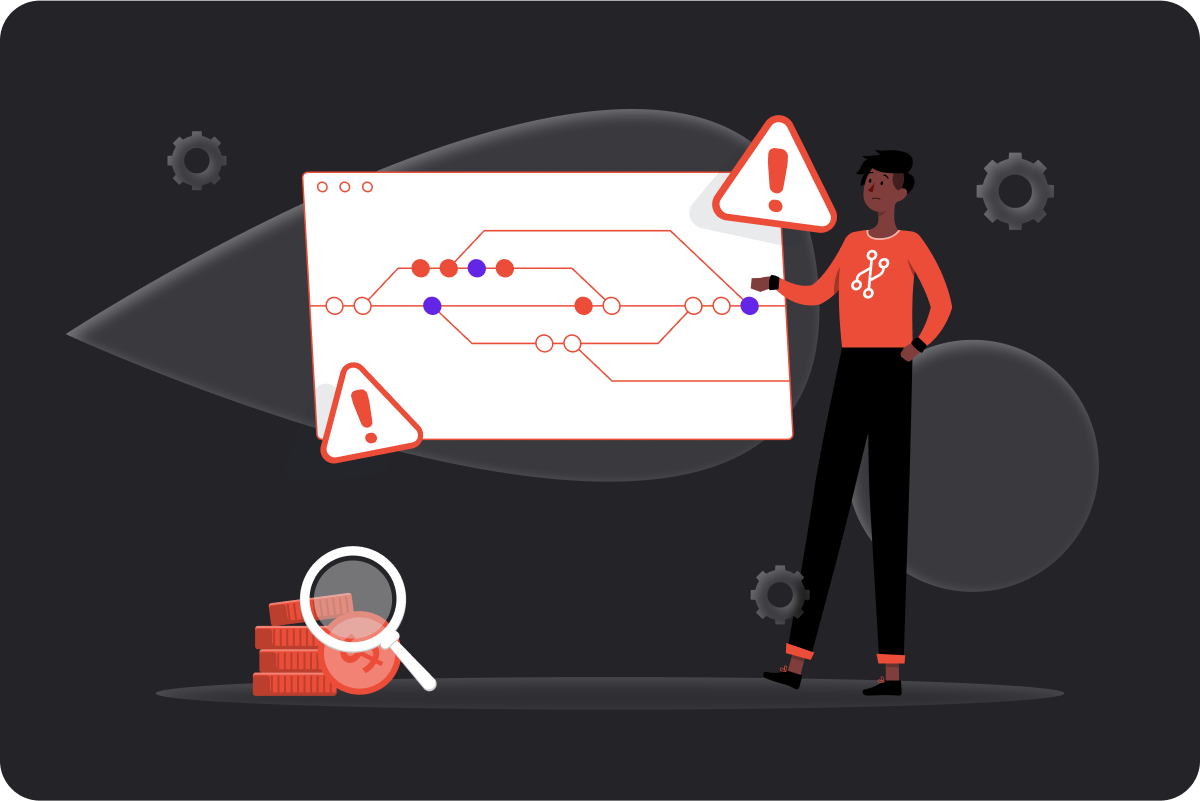
Preparing a contingency plan in 5 steps
Now that we’ve shared the importance of having a contingency plan at the ready, you’re probably wondering how you can go about creating one of your own. Below, we’ve outlined 5 steps to get you started in the right direction.
1. Break your project into phases
Contingency planning for an entire project can feel overwhelming. You might want to start by separating your project into a series of phases, which will allow you to examine the risks inherent in each phase.
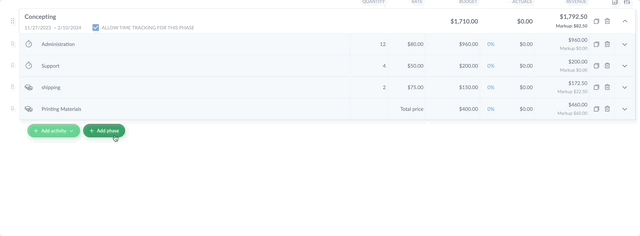
Rodeo Drive takes a phased approach to projects to make this process easier
2. Compile a list of risks inherent in each phase
Once you’ve identified the most important processes in every phase — whether that’s the delivery of certain project materials or receiving client approval on a tight deadline -– you’ll be able to gauge the potential risks you might encounter.
Good risk management goes hand in hand with contingency planning, as anticipating how your most important project events might go awry leaves you in a stronger position to determine how you’ll respond if the unexpected occurs.
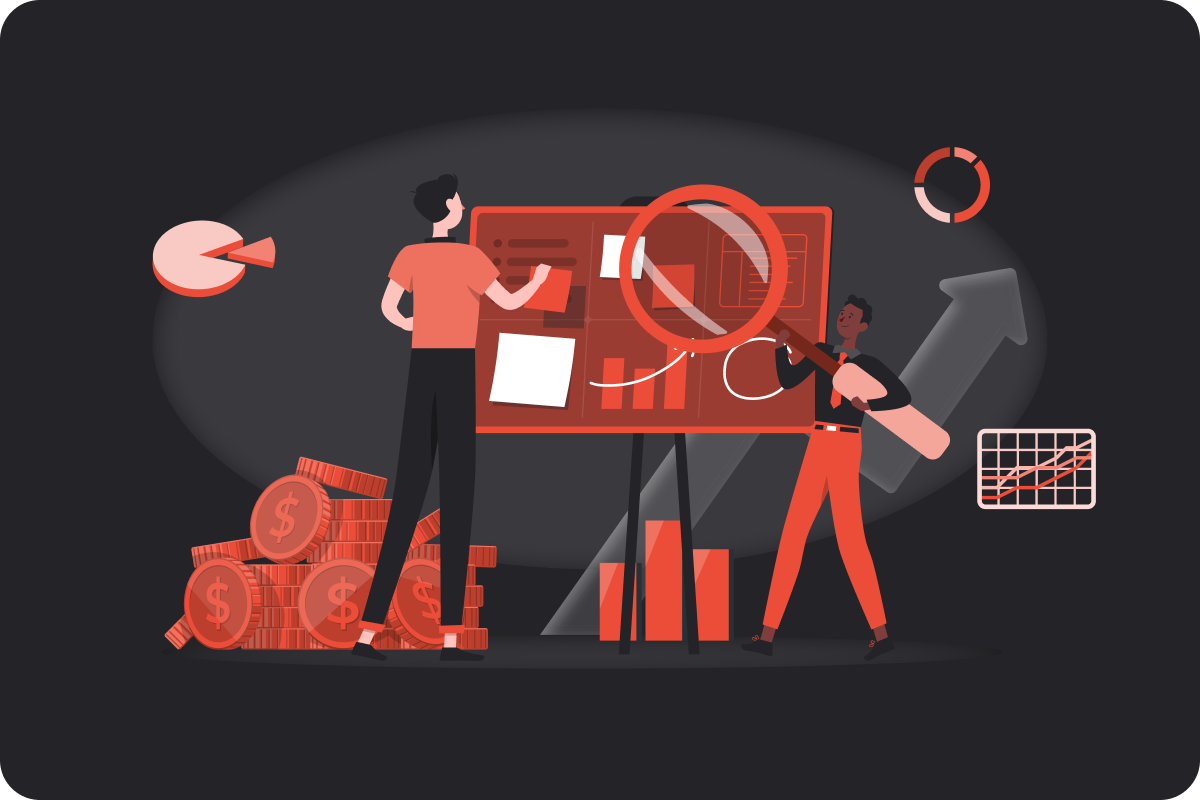
3. Assess the severity and likelihood of each risk
Not all risks are created equal, which is why risk mitigation plans typically assess the severity and likelihood of each project risk in great detail.
That said, there’s an advantage to including this step in your contingency planning process as well, as prioritization helps you better allocate your planning time so that the risks that would create the most damage and are the most likely to occur are the ones that receive the most attention beforehand.
Risk registers are another tool you can use to log the status, severity, and likelihood of all of your project risks. Using a risk register template can help speed up this assessment process.
You can also evaluate your risks using a risk assessment matrix, as seen in the graphic below. This involves assigning a numerical value to the scale of the risk's impact and its likelihood of occurring. You'll know how seriously you should take the risk depending on where it falls on the matrix, which can be helpful for those who need a visual representation.
.png)
4. Create a response plan for high-priority risks
This is one of the most important parts of contingency planning. For each risk you’re preparing for, you should ask yourself what should immediately be done if the worst-case scenario occurs.
For example, if shipping delays are a main source of risk for your project, you should have a backup supplier lined up that you can order the necessary materials from. Or, if your team suddenly needs an additional team member, you should have an idea of the top three or so alternative people you’d ideally bring on so you’re not left scrambling.
5. Ensure the team understands their role in the contingency plan
While it’s certainly useful to have a point person in charge of overseeing the contingency plan, it’s also critical that your team has been briefed on their role in the contingency response plan before the project kicks off. This will also help to improve team accountability.
Failure to keep everyone up to speed on their responsibilities can cause things to slip through the cracks when your team is already dealing with an unexpected crisis. Remember, communication is key.
What to consider when building a project contingency plan
The above steps will certainly help you through the process of building a contingency plan, but if you’ve never built one before, there are a few additional items you’ll want to consider.
Here are a few questions you should ask yourself while you’re in the planning process:
#1 What will trigger the implementation of your contingency plan?
Having a plan is great — but how will you know when it’s time to act on it? This is why it’s important to outline what event must occur for the plan to go into effect. Your team should have a clear understanding of when the situation switches from mitigation to damage control.
You should also consider who will be the point person for communication related to the implementation of your contingency plan. While this will probably be the project manager, a larger team might have an individual completely dedicated to risk management. If not, creating a communication plan might be a good idea.
#2 Do you have a contingency budget in place?
Projects that don’t go according to plan can be costly. And without the right amount of funds, it can be difficult to course correct, which is why you should allocate resources toward a contingency budget well before you actually need to use it.
You might find yourself needing to use this budget for things like extra labor, additional materials, and equipment repairs. For example, if some of your materials won’t be delivered in time due to a shipping delay, you want to make sure you have the money to purchase a second set of materials that can be delivered when you need them.
Related: How to Create an Effective Project Budget

#3 How regularly will you update your plan?
Projects are vulnerable to changes, and factors like scope creep or scope changes might require you to make some major updates to your contingency plan. You should have a regular schedule for updating your plan as necessary — perhaps at the conclusion of every quarter or project phase based on your progress reports. It’ll likely be easiest to assign responsibility for updating the plan to one team member.
Also read: How to Visualize Project Progress
How to use Rodeo Drive for your contingency planning
Contingency planning is just one part of managing a project. As such, the best way to save money and keep your workflows streamlined is by using a single project management tool that has contingency planning features.
Rodeo Drive is an all-in-one project management software solution that eliminates the need for integrations, serving as a single source of truth for your projects.
Here’s a look at the contingency planning features that Rodeo Drive has to offer:
Build phased budgets with ease
Not only will building a phase-based budget help you better visualize your potential project risks, but using project management software with built-in budgeting features is also helpful for building a contingency budget.

All projects begin with a budget in Rodeo Drive, which ensures that your projects remain financially healthy every step of the way. Plus, Rodeo Drive budgets update in real-time as you track your expenses and hours worked, meaning it’s easy to prevent overspending.
Quickly modify and rearrange planned activities
Should your contingency plan need to go into effect, you’ll need to act fast -– and you’ll want to have a task management system in place to help your team work as efficiently as possible.
With Rodeo Drive's planner, you can assign project activities to your team quickly and efficiently, along with the expected duration of the activity and a brief description.
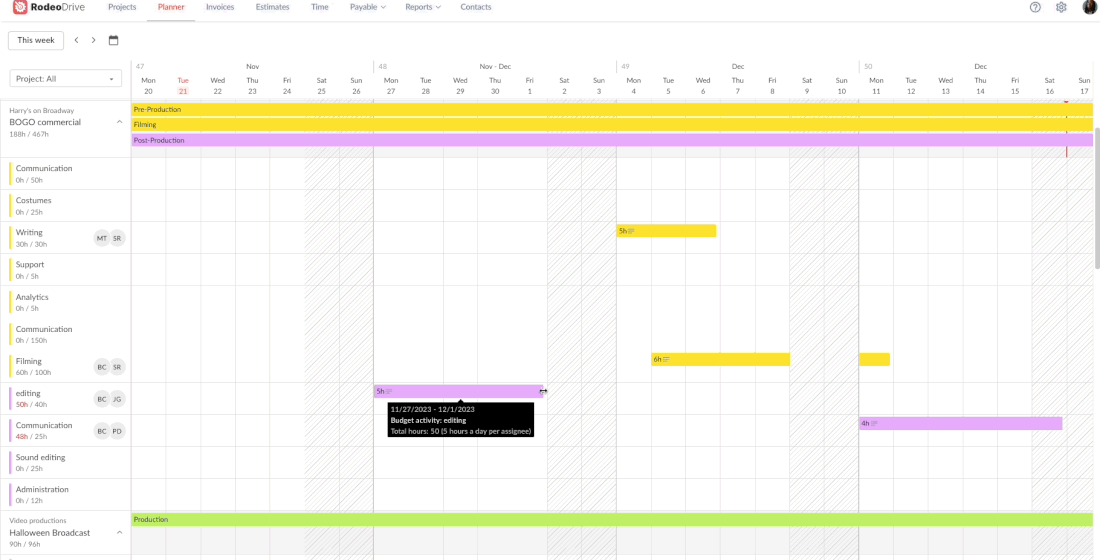
And if you suddenly need to reschedule a task due to a contingency plan taking effect, don't worry. Simply drag and drop your tasks within Rodeo Drive's planner to reschedule them. You can also shorten or expand the duration of each task in just one click.
Access reports on your team’s current project performance
Having access to real-time project reports is huge for contingency planning and risk management. For example, by seeing how your predicted budget numbers square up against your actual costs, you’re able to revise your contingency plans as the project progresses so that your plans are accurate and likely to succeed.
.png)
Rodeo Drive’s reporting feature offers a set of three different automatically generated reports based on your team's usage of the platform. This includes Time, Productivity, and Projects, the latter of which provides a complete overview of the financial health of your projects.
Not to mention, you can export your Rodeo Drive data as an Excel or CSV file and create your own custom reports outside of the platform. We know that data is key in detecting risks as soon as they materialize and enacting contingency plans quickly and efficiently.
Interested in trying Rodeo Drive for yourself?





